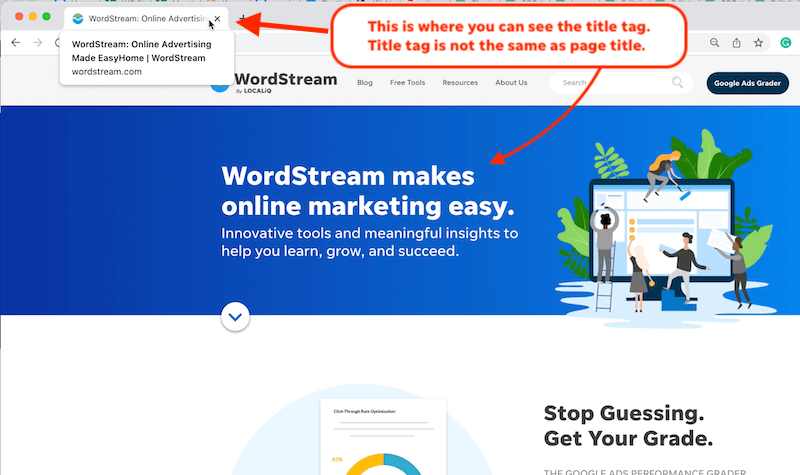Extensive Analysis: What Is Not Considered a Default Medium in Google Analytics
Revealing the Unconventional Mediums in Google Analytics Beyond Default Settings
In the realm of digital analytics, Google Analytics stands as a keystone for services seeking to comprehend their online presence. By venturing past the surface area and delving into the details of social media data, email project efficiency, referral website traffic resources, straight web traffic patterns, and personalized channel groups, a treasure trove of info awaits those ready to accept an extra nuanced approach.

Leveraging Social Media Site Insights
Periodically forgotten, yet exceptionally valuable, is the method of leveraging social media sites insights within the world of Google Analytics. By integrating data from systems like Facebook, Twitter, Instagram, and LinkedIn into Google Analytics, organizations can obtain a much deeper understanding of their audience and the performance of their social media sites campaigns.
Via this combination, marketing experts can track and assess customer actions on their site that stems from social media platforms. They can determine which social networks channels are driving one of the most traffic, which web content is reverberating with the target market, and which campaigns are converting the most leads. This insight permits data-driven choices to maximize social media methods and improve general marketing efficiency.
Moreover, by incorporating social media understandings with Google Analytics, businesses can create a lot more targeted and customized projects - what is not considered a default medium in google analytics. They can make use of demographic information, rate of interests, and online actions gathered from social media sites to fine-tune their target market division and supply customized messages that reverberate with certain client teams. This targeted method can bring about greater interaction, raised conversions, and ultimately, enhanced roi
Discovering Email Campaign Performance
Revealing Email Project Performance entails analyzing key metrics and efficiency indicators to evaluate the efficiency of e-mail marketing initiatives. When diving into e-mail project efficiency, it is vital to examine metrics such as open rates, click-through rates, conversion rates, and unsubscribe prices. By examining these metrics, marketers can fine-tune their e-mail campaigns for far better interaction and performance.
Analyzing Reference Web Traffic Resources
After examining the performance of e-mail campaigns via key metrics such as open prices and conversion rates, the next essential action is assessing referral web traffic sources in Google Analytics to understand where site visitors are coming from and exactly how they connect with the website. Referral web traffic sources describe the web sites that direct users to your site with clickable web links. By diving into this information, companies can gain understandings into which external platforms are driving web traffic to their site, whether it be social networks systems, partner sites, or on-line directories.
Evaluating referral web traffic can offer valuable details on the performance of exterior marketing initiatives and collaborations. It helps companies determine high-performing reference sources that add dramatically to website traffic and conversions. Furthermore, by comprehending the behavior of site this content visitors originating from various reference sources, organizations can customize their advertising and marketing approaches to maximize involvement and conversions. Google Analytics provides comprehensive records on reference traffic, allowing companies to track the efficiency of each reference source properly and make data-driven decisions to boost their on the internet presence.
Discovering Direct Website Traffic Patterns
Checking out the direct website traffic patterns in Google Analytics gives important understandings into customer behavior and the efficiency of campaigns - what is not considered a default medium in google analytics. Direct traffic refers to visitors who land on a website by directly keying the link right into their web browser, making use of bookmarks, or clicking on untagged links. Comprehending straight web traffic patterns can aid online marketers assess the impact of offline advertising and marketing efforts, brand name recognition, and the performance of word-of-mouth referrals
By diving right into direct traffic data, businesses can uncover essential info concerning user intent and brand name loyalty. Examining the habits of direct visitors, such as the web pages they check out, the moment invested in website, and the conversion rate, can offer a deeper understanding of customer engagement and the total efficiency of the website in transforming site visitors into customers.
Moreover, tracking straight web traffic patterns with time allows businesses to determine patterns, seasonality effects, and the success of details projects or promotions in driving straight check outs. This info can after that be used to improve advertising and marketing strategies, enhance website material, and enhance the general customer experience to take full advantage of conversions.
Using Personalized Network Groupings
Making use of customized network collections in Google Analytics permits businesses to classify and assess their web site web traffic based on particular standards, offering beneficial insights for maximizing advertising approaches. Custom-made network groupings enable companies to produce their very own customized groupings of web traffic resources, such as social networks, natural search, e-mail projects, and recommendation web traffic. By specifying these groupings, companies can get a much deeper understanding of just how different advertising networks add to their site traffic and conversions.
This feature is especially useful for companies This Site with varied advertising strategies throughout various systems. A firm running both paid and organic social media campaigns can separate in between the 2 to evaluate their specific efficiency accurately. Furthermore, personalized network groups can help identify any type of ignored or taken too lightly website traffic sources that may be driving valuable involvement.
Conclusion

By venturing beyond the surface area and delving into the ins and outs of go to website social media data, e-mail project efficiency, recommendation website traffic resources, direct web traffic patterns, and custom network collections, a prize trove of info awaits those eager to welcome a much more nuanced method. They can identify which social media channels are driving the most traffic, which material is resonating with the audience, and which projects are transforming the most leads.After examining the efficiency of e-mail campaigns with essential metrics such as open prices and conversion rates, the next crucial step is examining reference traffic sources in Google Analytics to comprehend where internet site visitors are coming from and just how they communicate with the website. Customized channel collections make it possible for firms to produce their very own customized collections of website traffic sources, such as social media, organic search, e-mail projects, and referral website traffic. By leveraging social media understandings, uncovering email project efficiency, analyzing recommendation website traffic resources, discovering direct website traffic patterns, and using customized network groups, marketing professionals can gain useful understandings right into their online visibility.